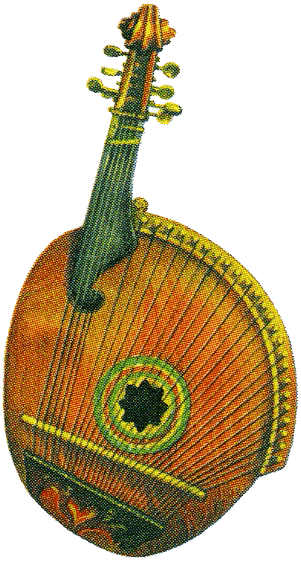The bandura, or also known as kobza, is a stringed musical instrument that belongs to the psaltery family. It is considered as the national musical instrument of Ukraine, and it is mainly used to accompany folk music. The bandura is considered to have both the elements of a lute and a zither. A musician who plays the bandura is called a bandurist, but back in the late 19th to 20th century, they were called kobzars.
Characteristics of a Bandura
A bandura has an oval wooden body with a short and fretless neck that is attached in an off-center position to its soundboard. The bandura has 4 to 8 bass strings which is connected from its body to the neck of the instrument. Aside from that, there are 30 or sometimes more than 60 chromatically tuned treble strings that is attached over its soundboard.
The bandura is typically played while in a seated position. The musician holds the body of the instrument on his lap and positions it in a nearly vertical position that is parallel to his torso. The bass strings of the bandura are plucked using the fingers of the left hand while the treble strings strummed using the right hand, sometimes with the help of a plectrum.
History of the Bandura
A ancestor of the bandura was the kobza, a three-to-eight-string instrument that is known to be first mentioned in Greek literature during the 6th century. In the Middle Ages, the kobza was a prominent musical instrument used in eastern European courts. It is usually accompanied with singing and dancing. During the 14th or 15th century, the kobza had additional strings and that is also the time when it became known as the bandura. Until today, kobza remains to be another name for the bandura.
During the 15th century the bandura was adopted by the kobzari. These are professional musicians, most of them were blind, and they used the bandura as a instrument to accompany epic ballads which told the story of the exploits of the Ukrainian Cossacks. During the late 19th and early 20th centuries, the kobzari were maltreated for articulating nationalistic ideas in their music, and in 1930, Joseph Stalin singed an order to execute a number of them.
In spite of the Soviet’s disapproval, the people’s interest in playing the bandura has increased during the 20th century. This was also the time when most bandura ensembles and schools were formed. Aside from this, the bandura, which was traditionally tuned diatonically, also had chromatically tuned versions during the 20th century. And when the 21st century, most bandura ensembles remained to be popular in Ukraine as well as in North American Ukrainian immigrant communities.
Origin of Bandura’s Name
According to studies, the earliest mention word bandura can be traced back to the Polish chronicle of 1441. It states that King Sigismund III, the king of Poland, had a court bandurist called Taraszko who came from the Ruthenian, or Ukrainian, ethnicity. He also happens to be the king’s companion when playing chess. Aside from Taraszko, there were also a number of other court bandurists that came from the Ukrainian ethnicity and they were all recorded in the medieval Polish documents.
The word bandura is an Ukrainian language that is believed to have originated in Poland. Studies believed that the term either came from Latin or from the Greek word pandora or pandura. However, some scholars believe that the word was introduced to Ukraine directly from the Greek language.

